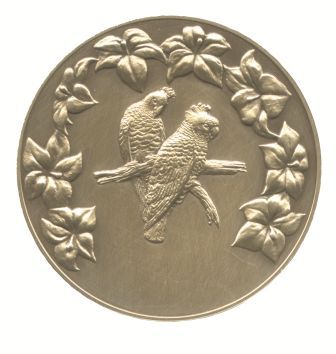Canberra Citizen of the Year
History of the Award
Citizen of the Year (1967-1968)
On the last day of Canberra’s Jubilee Year, 1963, the Canberra Times published a letter from George Westcott. Westcott had come to Canberra in 1927 and over the years had noted with considerable pleasure the contribution made by many Canberrans to the life and growth of the National Capital.
George’s suggestion was that the National Capital Development Commission, the Canberra Day Celebrations Committee or the Chamber of Commerce sponsor a Citizen of the Year award, to be presented during the Canberra Day celebrations.
The letter drew immediate support from Thomas Pye, the president of the Canberra Day Citizens’ Celebrations Committee. However, community enthusiasm for Canberra Day waned following the jubilee celebrations, and it was not until September 1966 that the matter was raised again, this time at a meeting of eight service organisations convened to discuss the future of Canberra Day.
Mr Colquhoun, convenor of the meeting, suggested that candidates would be nominated by any organisation in Canberra, and that the award would be something like an illuminated scroll. A steering committee was formed, and in November 1966 Mr Colquhoun, now chairman of the Service Clubs Canberra Day Committee, announced that the first award would be made in 1967.
Fourteen nominations were received, and a panel of five citizens selected Horace Hancock as the first Citizen of the Year for the ACT. Mr Richard Kingsland, Department of the Interior, presented the illuminated scroll during the annual Commemoration Ceremony at the foundation stone on Capital Hill.
In 1968, however, interest had dwindled again and, after the nomination period was extended and letters written to encourage organisations to submit names, Clarrie Hermes was announced as the second ACT Citizen of the Year.
By early 1969 Canberra Day as an event had declined, and the citizenship award disappeared.
Canberran of the Year (1977-1988)
The Canberra Times and the Canberra Week Committee announced in February that they were inviting nominations of people “who have made a significant contribution to the community in any field – culture, politics, welfare, sport, media or family life”. Nominees could be from any age group but must have been resident in the ACT for the previous 12 months. Nominations also had to be accompanied by a 50-word statement; the reasons given in this statement would be used by the judging panel to decide the winner.
Prouds jewellers provided a small, sterling silver, hand-sculpted medallionbearing the Canberra coat of arms and the name of the winner. The presentation was made at a civic reception given by the ACT Legislative Assembly.
The Assembly soon joined the Canberra Times and the Canberra Week Committee in sponsoring the award and providing representatives on the judging panel. In 1980 the Assembly announced that, in addition to the medallion, a tree would be planted in honour of the winner.
Canberra Citizen of the Year (1989 - present)
With self-government the new Legislative Assembly became the award’s sponsor. Rosemary Follett’s first official duty as Chief Minister of the ACT was to congratulate the 1989 Canberra Citizen and Junior Citizen of the Year.
The Canberra Citizen of the Year was from 1989 restricted to persons over 25 years on 12 March of the award year, and the new Junior Citizen (later Young Citizen) to those under 25 at that date.
In 1990 a related award was announced – ACT Woman of the Year. The Young Citizen and Woman of the Year awards continue but after 1995 were administered separately from the Canberra Citizen of the Year award.
In addition to age restrictions, eligibility for the three awards were:
- nominees for Citizen had to be ACT residents who through personal efforts had made a significant community contribution;
- for Junior Citizen anyone who deserved recognition for their achievements and/or involvement in community activities; and
- for Woman of the Year a resident who through professional or personal efforts had improved the status of women.
The Citizen of the Year has on occasion been a couple (Sir Zelman and Lady Cowen in 1982), a symbolic figure (The ACT Firefighter in 1985), an organisation (Clare Holland House in 2005), and the entire population of the ACT (The Canberra Community in 2003).
The award is still a medallion, but now bears the floral and faunal emblems of the ACT – the Royal Bluebell and a pair of Gang-Gangs. Full list of awardees.


